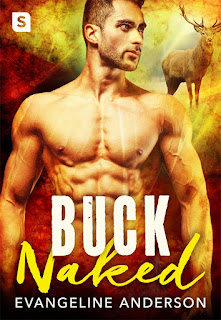Talking with author, Joel Fox

Unable to close his previous case against the Monument Bomber, Senior FBI Special Agent Zane Rigby has been re-assigned to uncover a secret. Is Abraham Lincoln's body in his grave? When DNA from a hand found with a blackmail note traced back to 1901 matches the DNA from bone taken at Lincoln's autopsy, Rigby is shuffled off to Springfield, Illinois where all manner of obstacles threaten his success. He discovers a local congressman hiding a dreaded secret, a strange doctor who claims he can perform medical miracles, and his own ill-timed urge to rekindle a relationship with his college sweetheart. And then there is the dead body of a young woman found near Lincoln's Tomb. As the Monument Bomber threatens to strike again, Rigby searches for redemption in solving the murder and discovering the secret buried in Lincoln's Tomb.
Location, Location...Location.
They say that criminals often revisit the scene of the crime and I had that sense of returning to where it all happened when I went back to the place where a major portion of my first mystery novel, Lincoln’s Hand, is set: Springfield, Illinois.
The reason for my concern -- now that the book is out, I wondered if I messed up anything with the location. My novel came out six years after my last fact-finding trip to Springfield. A lot can change in six years. Did I remember everything correctly? Did streets become one-ways? What about the train depot in the near-by town of Lincoln, Illinois, up the road from Springfield, where I set a scene … were the railroad cars moved away for a more modern building?
On my return to Springfield, I was to speak in the evening at the city library– called the Lincoln Library, naturally. I had done research at the library six years before. In Lincoln’s Hand, I had set some scenes in the library as my protagonist, FBI agent Zane Rigby was chasing down clues. One particularly important scene was in a special collection room of the library known as the Sangamon Valley Collection. I assumed that this room must still be there.
But when I arrived at the library at midday and went up the main staircase to the second floor I couldn’t find the room! There was an open space with many study carrels and tables. I panicked.
I had highlighted the page in my book to read that night in which the scene took place in the Sangamon Valley Collection Room. Had the library been remodeled to make room for more tables? What was I going to say?
Muttering to myself, I began walking down the stairs when I had a revelation. Could the collection room be on the third floor? I didn’t think so but turned around and headed up to check.
There, to my great relief, was the room, pretty much as I remembered it.
But what about the pictures on a near-by wall that depicted Abraham Lincoln from various stages of his life in Illinois? I had described them in the book. I checked. They were still there. Good.
That night, I spoke to a gathering at the library and included my story of concern that the pictures would no longer be posted. (I was too embarrassed to admit I misplaced the room.) A librarian told me that the pictures had been donated by a former mayor who had passed-on and the pictures would soon be gone, too.
Apparently, I published just in the nick of time.
But it has me thinking, over the course of writing a book, which is set in an area that the author does not reside, how often should the writer check back to see that everything is as he or she remembers? In some cases, books take years to write. As we all know, many changes can occur in that time.
It is the author’s duty to get the facts and locations right. Therefore the writer should follow up to keep up with changes. With the use of modern technology that is easier than it once was. But there are occasions where old-fashion phone calls or a return trip to the site might be called for.
As I prepare for my next book I will keep this in mind. Problem is, I have an important scene in a place I probably won’t get to: Cocos Island three hundred miles off of Costa Rica. Google Earth will have to do.
What do you think, is it too risky using real but remote settings for a novel when the work could take a long time to complete?

Joel Fox likes to say he has a long rap sheet in California politics. For three decades he has been a taxpayer and small business advocate, served on numerous state commissions, worked on many ballot issue campaigns, and advised numerous candidates, including Arnold Schwarzenegger in the historic gubernatorial recall election of 2003. He is an adjunct professor at the Graduate School of Public Policy at Pepperdine University.
Fox has authored hundreds of opinion pieces for many publications including the Wall Street Journal, USA Today, Los Angeles Times, and San Francisco Chronicle, as well as his well-respected blog on California business and politics, Fox and Hounds Daily.
His non-fiction works include a book, The Legend of Proposition 13, about California’s most famous ballot measure, and a chapter in the book, What Baseball Means to Me, sanctioned by the Baseball Hall of Fame.
In 2008, Fox completed the Los Angeles FBI Citizens Academy program gaining a deeper understanding of the FBI and its mission.
Fox grew up in Massachusetts. He says he got his love for history breathing the air in the Boston area, daily driving past the homes of the presidents Adams and visiting many historical sites.



Comments